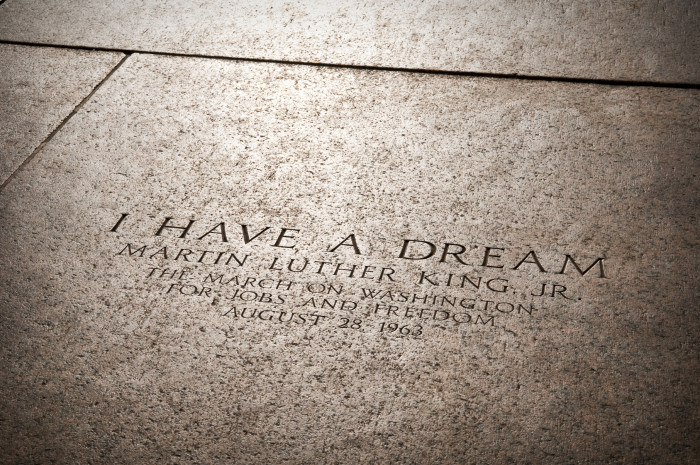Organizational leaders are more aware than ever of the importance of an engaged, strategically-aligned workforce and the importance of employee engagement in achieving an organization’s goals.
But what happens when one of those same leaders – one who invests wholeheartedly in employee engagement initiatives – holds a strategy presentation for her staff?
In our experience, one of two things happens:
1) Employees learn about the direction the company is taking and consider how they can be part of it (Translation: high “engagement”), or
2) Employees are bored senseless.
(It’s true).
As we work with clients to better engage employees in new strategies, we consistently see these two distinct reactions from employees to their leaders’ presentations.
Whether during a change/transformation program or when launching a new operating model or product, some leaders deliver compelling messages about the new direction, making the strategy presentation a form of employee engagement itself. And other leaders miss this opportunity for engagement entirely.
So what’s the difference between the engaging and the dis-engaging strategy presentations?
Our list of principles (below) apply regardless of the position of the person delivering the message – from CEO to middle manager to change leader/ HR executive.
Mistake # 1: Placing too much focus on the PowerPoint deck
PowerPoint is both the strategy presenter’s friend and his enemy. On one hand, having a standard strategy document is useful. It ensures consistency and accuracy of the message across presentations and presenters. But if a presenter focuses only on getting the precision of the message right, he loses the connection with his audience.
Instead Try: Focusing on the employee’s perspective
Before the presentation, put yourself in the employees’ shoes. Ask yourself: What will this group of employees actually want to know about the strategy? Are they concerned about the possibility of losing their jobs? Do they want to know what skills will be expected of them in the new world? It is important that your presentation address those questions. Even if you have no absolute answers, open up about what you are able to share and what remains unknown.
Mistake #2: Being too general
A strategy, by definition, represents a big-picture perspective. So it can be easy to present only this high level view. Each employee is interested in how the strategy will impact him/her. If your presentation does not help employees consider the strategy in this context, they will be bored.
Instead Try: Being specific and personal
Be as specific as you can. Discuss what is expected to change for employees on a day-to-day basis. Provide an example. Sharing a personal anecdote about another employee to whom they can relate, for instance, can help employees to relate the strategy to their own place in the organization, though you will want to avoid Mistake #3 (below).
Mistake #3: Taking the “Insert personal story here” approach
The value of story-telling in the corporate context is not news to executives. Numerous publications and coaching opportunities target the cultivation of the story-telling practices of executives.
But here’s the thing – when a story looks planted, the audience can almost hear you saying “this is the part of the presentation where I share a personal story.”
The result? Your story sounds canned. Inauthentic.
We as human beings are wired to connect with stories. So when the story is inauthentic or planted, we are wired to pick this up, too. And we disengage.
Instead try: Making your presentation more like a TED Talk
A clear example of the success of story-telling to explain complex ideas is the success of TED Talks.
As TED curator Chris Anderson explains, the TED approach focuses on helping speakers make their knowledge accessible through the telling of stories.
In other words, rather than presentations with the “insert story here” approach, TED Talks are the story.
In applying the success of the TED Talk philosophy to the corporate environment, the goal is to tell a story as the foundation of your presentation. It needs to be authentic and compelling. It’s the “why we are here talking about this” and the “who cares?” behind the strategy you are presenting.
In the words of change guru John Kotter, this helps you to create the burning platform for why this change in direction is important.
Should you still use the strategy PowerPoint slides? Yes, because this can help the employee to connect the dots between your story and the strategy message that will be reinforced elsewhere. Here you are translating the strategy for them in a compelling and engaging way.
So the reframe is this: your story is the presentation. The strategy deck provides supporting material to convey your message.
Mistake #4: Avoiding talk about the past
Good leaders are by definition forward-looking. They help move organizations from where they are to where they want to be. But talking about the future of your company and how you will get there without situating your message in the historical context can make your message one-dimensional.
If you don’t believe this, close your eyes and think for a moment of the most compelling speech you have heard. You need not limit yourself to the corporate world. Speeches by Martin Luther King or Winston Churchill count, too.
Each of these speeches – whether corporate or political or personal – cleverly links the past/historical context with a call to action for the future.
Leaders will often defend their position about why they avoid talking about the past. “I don’t want to harp on our old problems” or “this is the new strategy, and that is all people need to know.”
But human beings are not robots. And the goal is engaged employees, right?
You as the leader may have already had a chance to reflect upon the past as you helped shape the new strategy. But for many employees, your presentation (your “story” or “talk”) may be one of their first real opportunities to consider the historical context or impetus for a strategy change.
Instead Try: Focusing on the dynamic nature of the strategy
Strategy documents (and their visual depictions of the strategy) often give an illusion that a strategy is static, as if written in stone to remain unchanged from here going forward. But as a creator of strategy, you know that a good strategy is anything but static. Good strategies shift alongside changing needs and innovations in the marketplace and respond accordingly to the needs of clients and customers.
For employees to truly understand the why behind the strategy and where the organization is headed, your talk – your story – will link the past, present, and future. Once employees are able to reflect upon where they (and their company) have been and consider where the company is going, only then will they begin to engage in present action to contribute to the strategy.
________________
In short, if you use your next strategy presentation as an opportunity to tell an authentic story and to talk with employees about the future in a way that is relevant to them in their context, you have a great chance of boosting employees’ engagement levels. And employees will be anything but bored in the process.
Interested in learning more about Hilgart? Click here.




